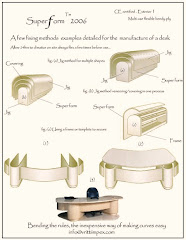
Well the term 'cant see the wood for the trees' comes to mind,this fine picture was found on the web while looking for information on the english village of Gweek,I failed to find the name of the photographer but all credit is due to who ever took this masterpiece,trees like this make fine masts and booms of course! In South Africa,we have a pine species named Radiata Pine,it was sourced from New Zealand,when it was first planted here,we had a number of forestry specialists from New Zealand visit our country to give advice,it must have been well taken too,Radita Pine is all over South Africa,mainly grown for either roofing or paper pulp production,planted and harvested in rotation.
Radiata Pine 'The Remarkable Pine'
Radiata pine (Pinus radiata) was originally named Pinus insignis or 'remarkable pine' - an apt name for a tree which has had such a dramatic impact on the world timber scene. It is a tree which is suited to a considerable range of growing conditions, is easily raised and planted, and provides larger yields of usable timber in a shorter time than many native species.
The timber is particularly useful: it can be readily sawn, peeled, or converted to pulp, has good nail-holding power, works well, can be easily stained, and when treated with preservatives, is suitable for long-life applications in the ground.
Radiata pine is a softwood tree, which means the wood does not have pores and has long fibres (tracheids) compared to hardwoods.
However, the name softwood is confusing because radiata pine is harder (denser) than many hardwoods such as balsa and poplars.
Radiata pine is a native of North America, growing naturally in three localities on a narrow stretch of coast in Southern California and two small islands off the coast of Mexico.
However, the species is now one of the most widely grown exotic timber species in the world, covering 3.7 million hectares (ha) with large areas of plantation in New Zealand (1.2 million ha), Chile (1.3 million ha), Australia (740,000 ha) and Spain (260,000 ha).
Roy




No comments:
Post a Comment